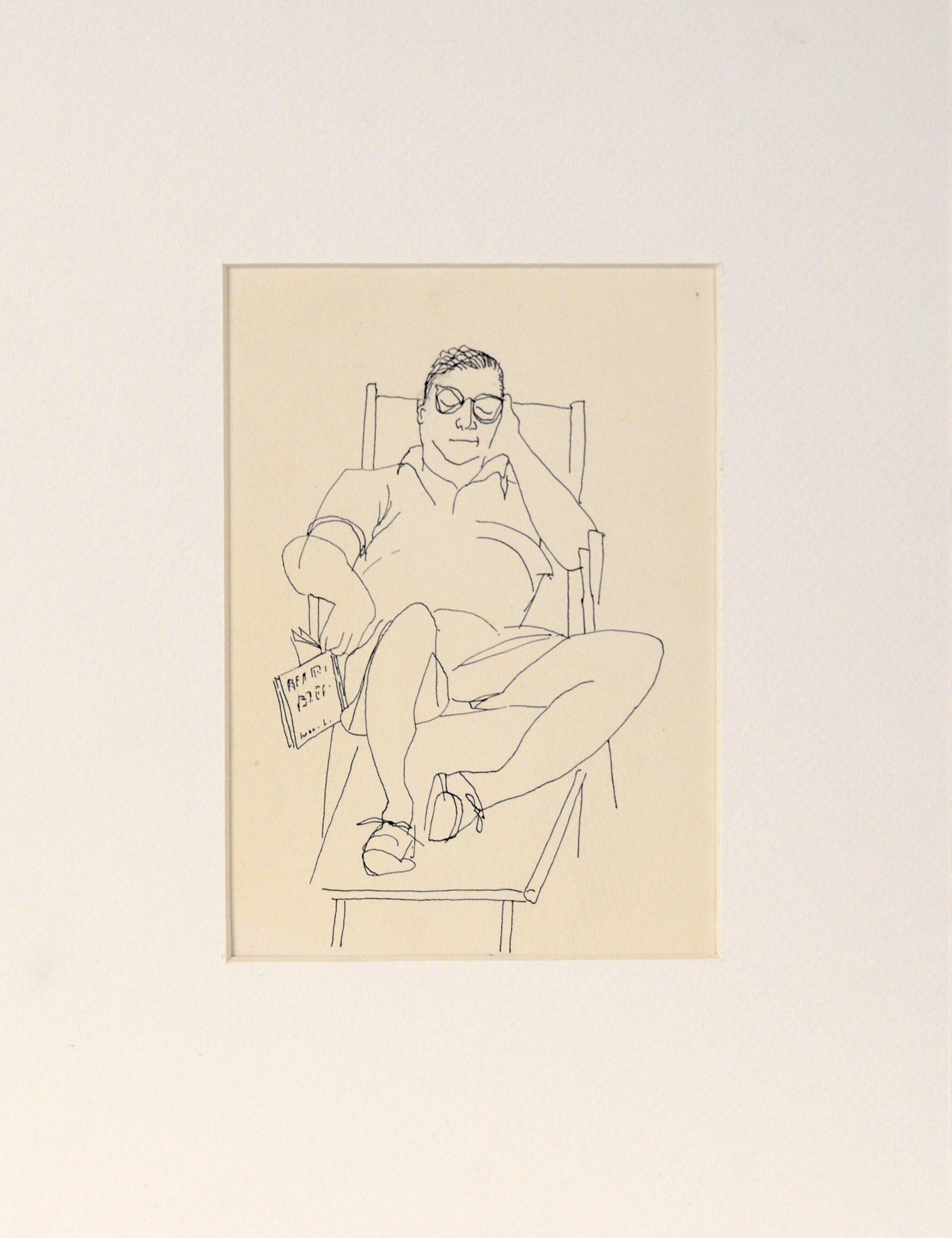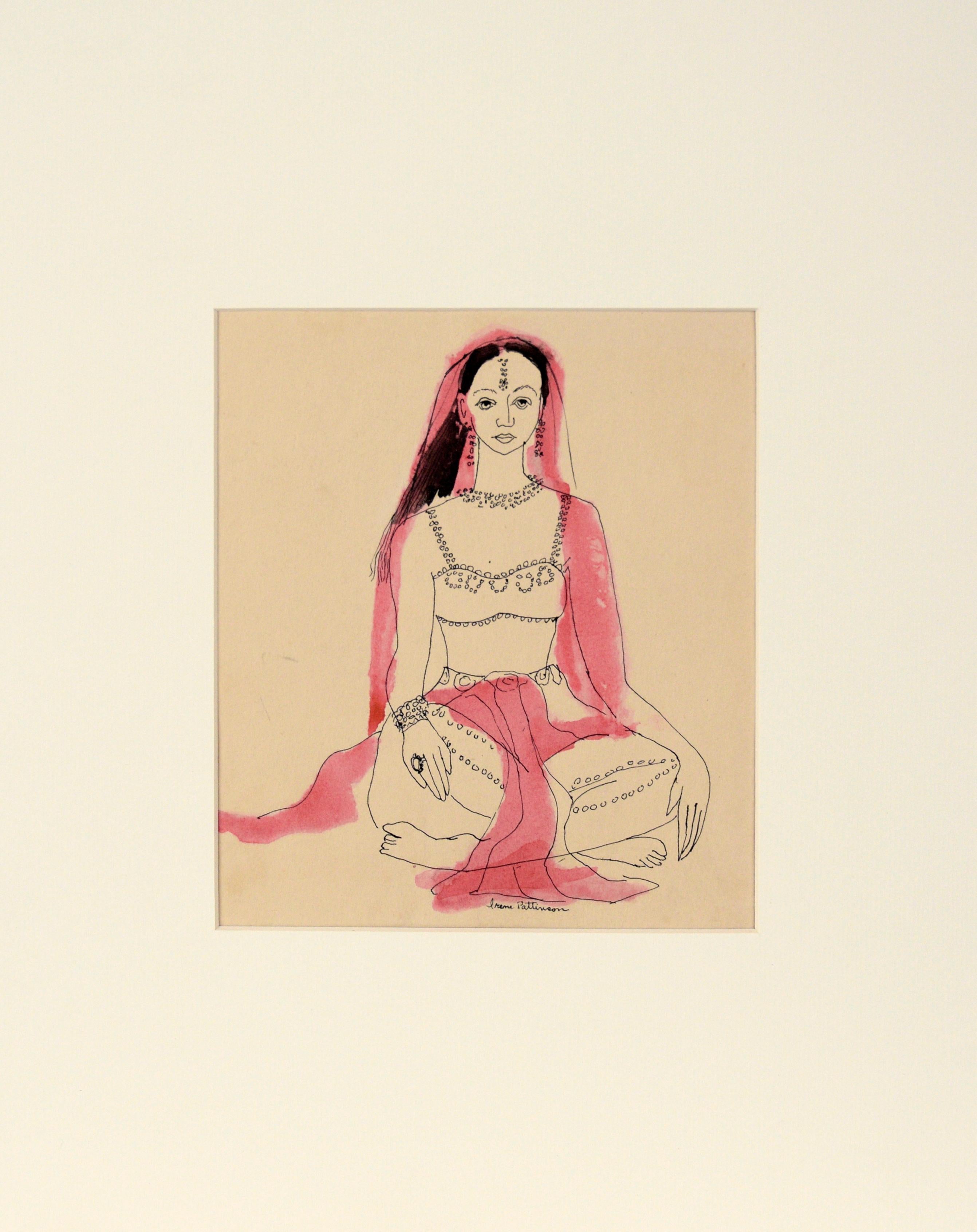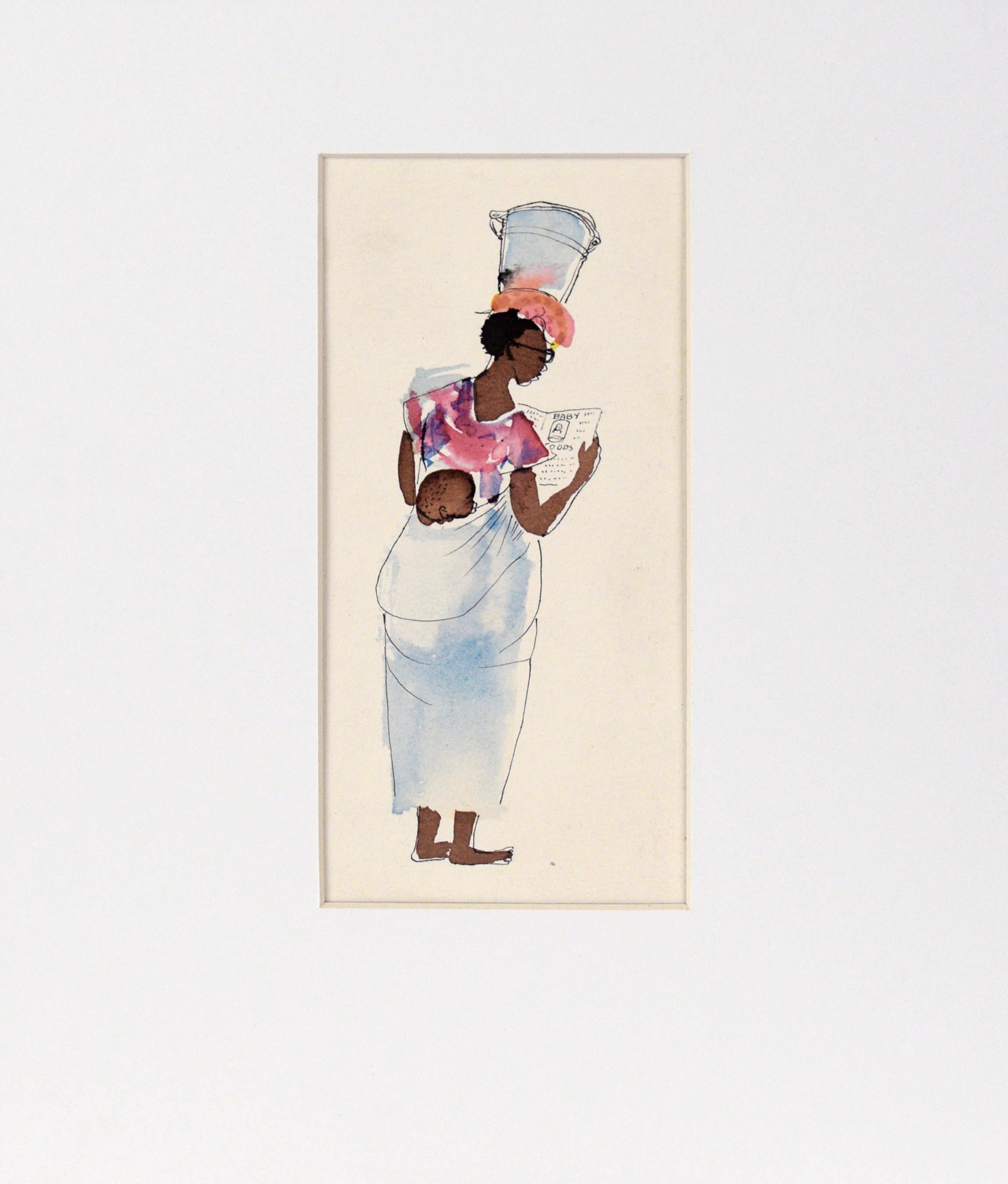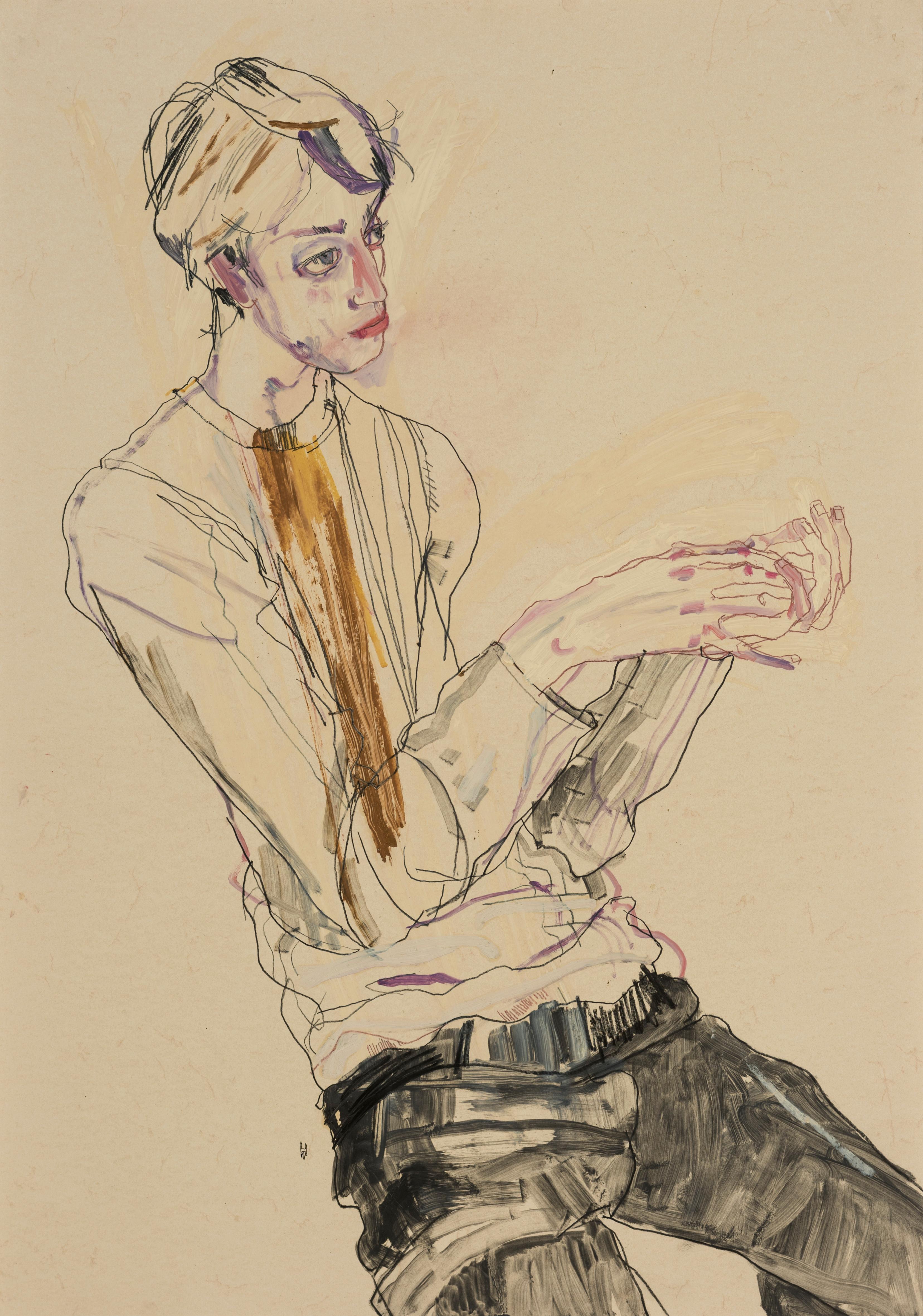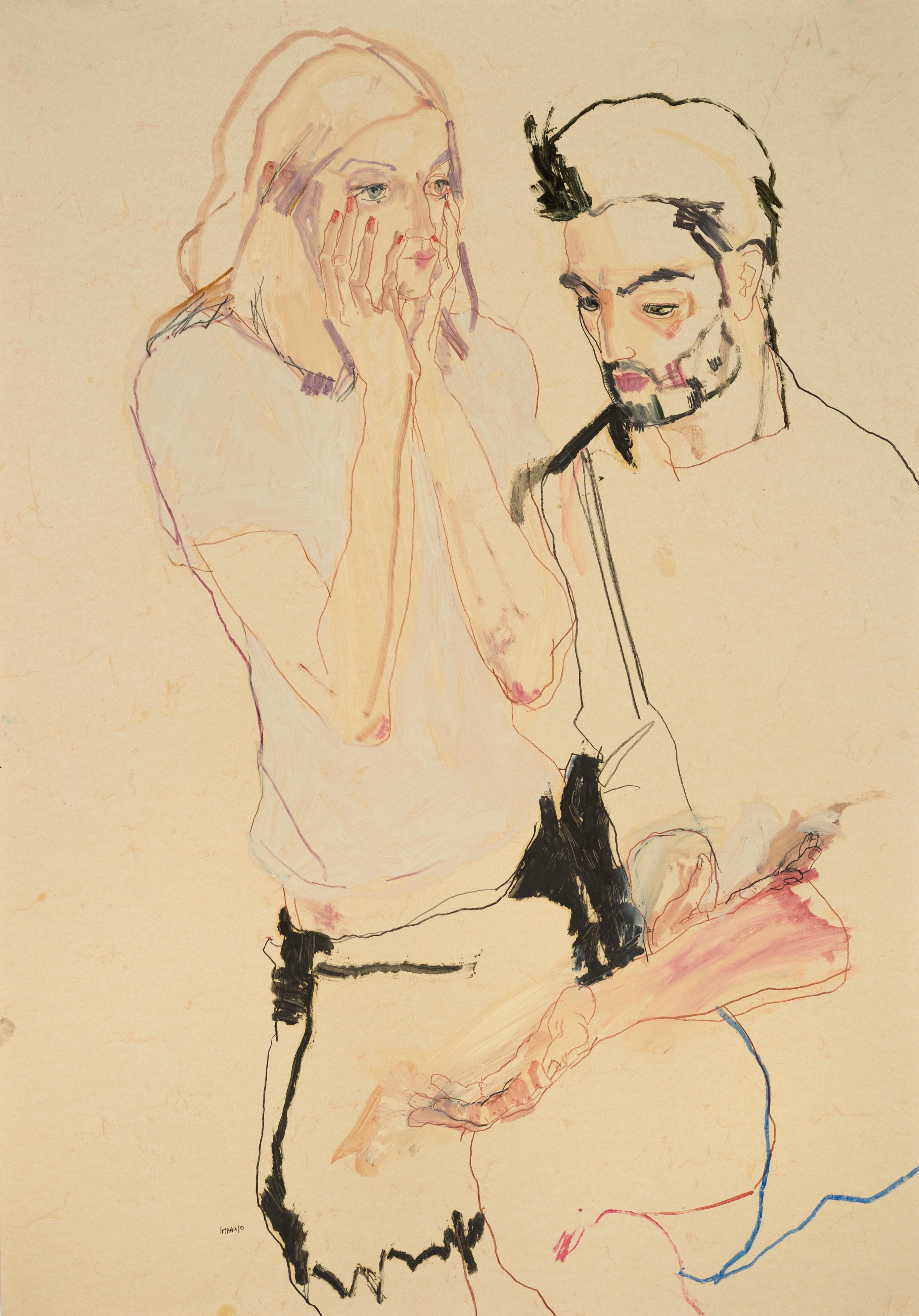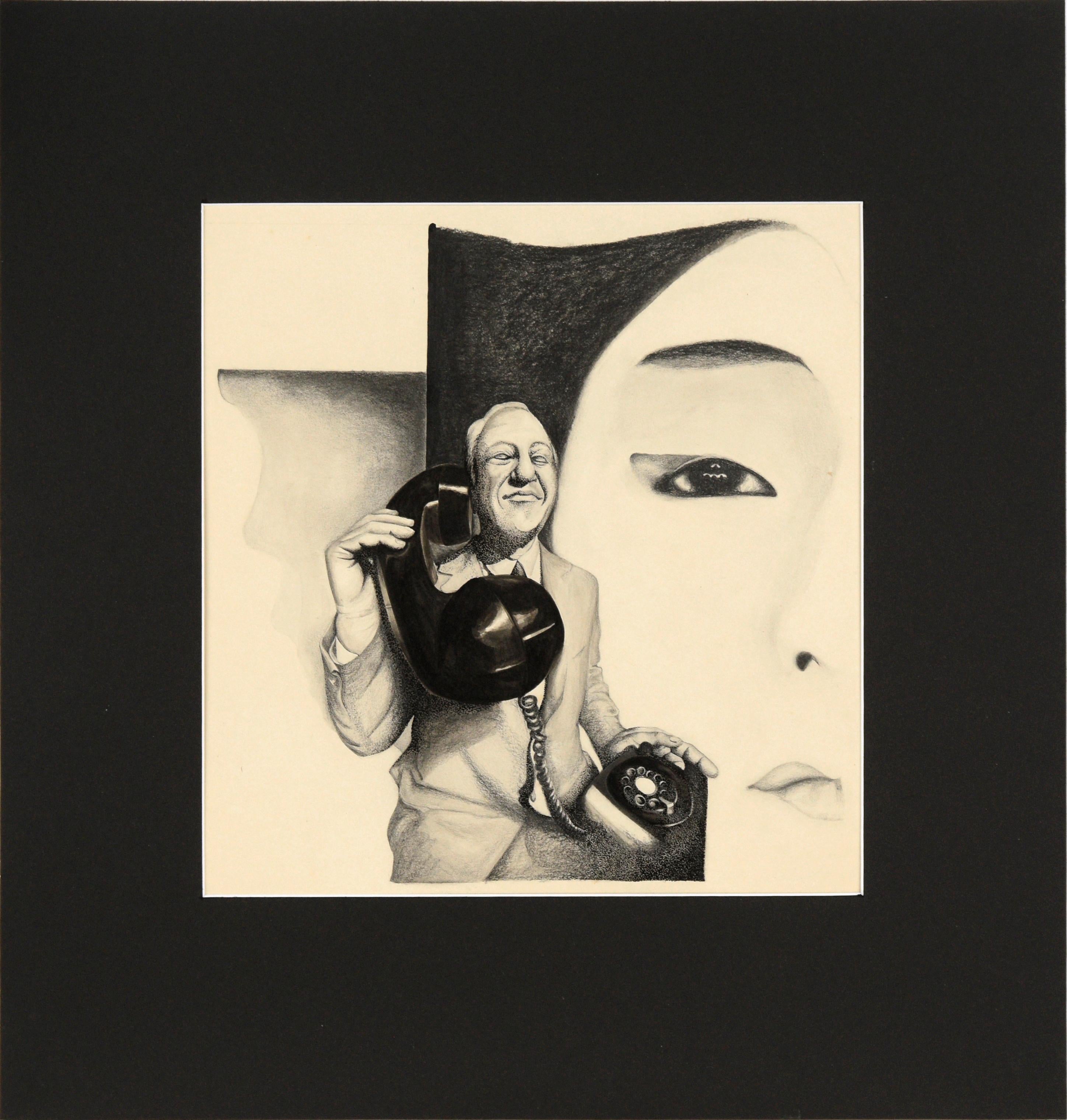Henri MatisseLe Turban by Henri Matisse - Portrait, Ink Drawing1944
1944
About the Item
- Creator:Henri Matisse (1869-1954, French)
- Creation Year:1944
- Dimensions:Height: 20.28 in (51.5 cm)Width: 15.36 in (39 cm)
- Medium:
- Movement & Style:
- Period:
- Condition:
- Gallery Location:London, GB
- Reference Number:1stDibs: LU261213810472
Henri Matisse
Whether working as a draftsman, a sculptor, a printmaker or a painter, Henri Matisse was a master of color. Although classically trained at the Académie Julian, in Paris, he quickly abandoned traditional techniques and genres to pioneer a style all his own, marked by quick, gestural strokes and fluid contours.
Along with fellow painter André Derain, Matisse was the leading proponent of Fauvism, a movement whose name is derived from the French word for "wild beast.” Marked by vibrant hues, Fauvist paintings like Matisse’s famous 1906 composition Le Bonheur de vivre use wild, active brushstrokes and a palette unconstrained by nature, resulting in women with purple skin and trees with orange leaves. Often, these compositions unite pure color with the white of exposed canvas to create a sense of transparency and light.
In addition to masterful landscapes and still lifes, Matisse loved to paint erotic subjects, particularly the female nude. Rejecting strict realism, he distilled the form into its essential parts and then translated these into voluptuous, rounded contours. With its striking colors and sculptural modeling of the figure, Odalisque couchée aux magnolias is among Matisse’s most famous works — and the most expensive work of his ever sold — depicting Henriette Darricarrère, his muse and favorite model for around seven years, lounging luxuriously in his Nice studio. In pictures like the lithograph Nu Bleu, he explored the expressive power of a body in motion by placing his figures in twisted or contorted poses, transforming their limbs into tangles of color and shape that push figure painting toward abstraction.
Find original Henri Matisse prints, sculptures and other art on 1stDibs.
- ShippingRetrieving quote...Ships From: London, United Kingdom
- Return PolicyA return for this item may be initiated within 7 days of delivery.
- Watercolour artwork by Ludovic Rodo Pissarro titled 'Le Moulin de la Galette'By Ludovic-Rodo PissarroLocated in London, GBLe Moulin de la Galette by Ludovic Rodo Pissarro (1878 - 1952) Watercolour and ink on paper 21 x 15.7 cm (8 ¼ x 6 ¼ inches) Signed with Estate stamp and inscribed Elisabeth lower ri...Category
Early 1900s Post-Impressionist Figurative Drawings and Watercolors
MaterialsPaper, Ink, Watercolor
- The Diggers in Ashford by Ludovic-Rodo Pissarro - Ink on paperBy Ludovic-Rodo PissarroLocated in London, GBSOLD UNFRAMED *UK BUYERS WILL PAY AN ADDITIONAL 20% VAT ON TOP OF THE ABOVE PRICE The Diggers in Ashford by Ludovic-Rodo Pissarro (1878-1952) Ink on paper 22.6 x 17.3 cm (8 ⅞ x 6 ¾...Category
1910s Figurative Drawings and Watercolors
MaterialsPaper, Ink
- A Study of Human Head and Tiger by Orovida Pissarro - SketchBy Orovida PissarroLocated in London, GB*UK BUYERS WILL PAY AN ADDITIONAL 20% VAT ON TOP OF THE ABOVE PRICE A Study of Human Head and Tiger by Orovida Pissarro (1893-1968) Pencil on paper 25.5 x 20 cm (10 x 7⁷/₈ inches) E...Category
1910s Post-Impressionist Animal Drawings and Watercolors
MaterialsPaper, Pencil
- Large black and white drawing by Yvon Pissarro titled Farmhand in a CowshedBy Yvon PissarroLocated in London, GBFarmhand in a Cowshed by Yvon Pissarro (b. 1937) Graphite on paper 56 x 76 cm (22 x 30 inches) Signed lower left Yvon Vey Provenance Studio of the arti...Category
1980s Contemporary Animal Drawings and Watercolors
MaterialsPaper, Graphite
- Madame Petitjean Assise, 19 mai 1901 by Hippolyte PetitjeanBy Hippolyte PetitjeanLocated in London, GBMadame Petitjean Assise, 19 mai 1901 by Hippolyte Petitjean (1854-1929) Sanguine on paper 52.8 x 38.6 cm (20 ³/₄ x 15 ¹/₄ inches) Studio stamp and dated lower left, 19 mai 1901 Executed in 1901 Provenance JPL Fine Arts, London Exhibition Monte Carlo, Artis Monte-Carlo, Maitres modernes et contemporaines, 31 July - 15 September, 1989 Artist biography Born at Mâcon in France, artist Hippolyte Petitjean studied at the École des Beaux-Arts in Paris under the tutelage of academic artists Alexandre Cabanel and Pierre Puvis de Chavannes. In 1884 Petitjean met and become close friends with the older Neo-Impressionist artist Georges Seurat – whose influence changed the course of Petitjean’s artistic career. Joining with the Neo-Impressionists, Petitjean was influenced by the Symbolists and employed Seurat’s Pointillist technique. He exhibited at the Salon des Indépendants, the Galerie Durand-Ruel in Paris and at Le Brac de Bouteville. Alongside his work as an art teacher, Petitjean also exhibited to wide critical acclaim in Brussels (1893,1898), Berlin (1898), Weimar (1903) and Wiesbaden (1921). Never prolific or indeed financially stable, Petitjean’s oeuvre of around three hundred and fifty painting...Category
Early 1900s Post-Impressionist Portrait Drawings and Watercolors
MaterialsPaper
- Récolte des Pommes by Georges Manzana Pissarro - Mixed media on paperBy Georges Henri Manzana PissarroLocated in London, GB*UK BUYERS WILL PAY AN ADDITIONAL 20% VAT ON TOP OF THE ABOVE PRICE Récolte des Pommes by Georges Manzana Pissarro (1871-1961) Mixed media on paper, laid on board 44.5 x 55 cm (17 ...Category
Early 1900s Post-Impressionist Figurative Drawings and Watercolors
MaterialsPaper, Mixed Media, Board
- Lounge Chair Nap - Vintage Illustration in Ink and WatercolorBy Irene PattinsonLocated in Soquel, CALounge Chair Nap - Vintage Illustration in Ink and Watercolor A man lazes in a lounge chair, book still in hand, as he dozes off with a content e...Category
1950s American Modern Figurative Drawings and Watercolors
MaterialsIndia Ink, Pen, Paper
- Indian Dancer - Vintage Illustration in Ink and WatercolorBy Irene PattinsonLocated in Soquel, CAIndian Dancer - Vintage Illustration in Ink and Watercolor A stoic, dark-haired woman in elaborate dress is sitting cross-legged in this illustration by Irene Pattinson (American, 1909-1999). Pattinson uses fine ink line detail and a vibrant pink watercolor for a splash of color. Signed at the bottom, "Irene Pattinson." Provenance: The Artist, Estate of Irene Pattinson: David Carlson; Estate of Larry Miller Fine Art, Robert Azensky Fine Art. Presented in a new white mat with foam core backing. Mat size: 16"H x 12"W Paper size: 11.75"H x 8.5"W Image size: 7.5"H x 6.5"W Irene Pattinson (American, 1909-1999) studied at the California School of Fine Art (now The San Francisco Art Institute), San Francisco State College and The Marion Hartwell School of Design. She was President of the San Francisco Woman Artists Association 1955-56. Provenance: The Artist, Estate of Irene Pattinson: David Carlson; Estate of Larry Miller Fine Art, Robert Azensky Fine Art. Solo Exhibitions: Lucien Labaudt Gallery 1955; San Francisco Museum of Art, 1961 (39 works). Selected Group Exhibitions: San Francisco Art Association Annual 1948, 54, 55; San Francisco Woman Artists, 1957-1960; Oakland Art Museum Annual, 1951, 58; California Palace of the Legion of Honor, 1960; Richmond Art Center, 1955, 56, 57, 58; San Francisco Art Institute 1959, 60. The Art Bank of the San Francisco Art Association, 1958, 59, 60, 62, 63; Winter Invitational, California Palace of The Legion of Honor, San Francisco, 1960; Fourth Winter Invitational, California Palace of The Legion of Honor, San Francisco, 1963. Awards: First Place, San Francisco Woman Artists Assoc., 1957, 1959; San Francisco Art Festival 1957;Literature: San Francisco Art Institute - A catalog of the Art Ban 1962/63; San Francisco and the Second Wave: The Blair Collection Exhibitions: 1963 The Art Bank of the San Francisco Art Association, San Francisco, CA 1963 California Palace of The Legion of Honor: Forth Winter Invitational, San Francisco, CA 1962 The Art Bank of the San Francisco Art Association, San Francisco, CA 1961 San Francisco Museum of Art, San Francisco, CA 1960 California...Category
1950s American Modern Figurative Drawings and Watercolors
MaterialsIndia Ink, Paper, Watercolor, Pen
- African Mama - Vintage Illustration in Ink and WatercolorBy Irene PattinsonLocated in Soquel, CAAfrican Mama - Vintage Illustration in Ink and Watercolor A charming illustration, by Irene Pattinson (American, 1909-1999), shows a woman with a...Category
1950s American Modern Figurative Drawings and Watercolors
MaterialsPaper, India Ink, Watercolor, Pen
- Ben Waters (Seated, Hand Holding), Mixed media on Pergamenata parchmentBy Howard TangyeLocated in London, GBHoward Tangye (b.1948, Australia) has been an influential force in fashion for decades. Lecturing at London’s Central Saint Martins for 35 years, including 16 years as head of BA Wom...Category
2010s Contemporary Figurative Paintings
MaterialsGesso, Paint, Paper, Parchment Paper, Charcoal, Crayon, Oil Crayon, Oil ...
- Sarah & Asad (Hands to Face), Mixed media on Pergamenata parchmentBy Howard TangyeLocated in London, GBHoward Tangye (b.1948, Australia) has been an influential force in fashion for decades. Lecturing at London’s Central Saint Martins for 35 years, including 16 years as head of BA Wom...Category
2010s Contemporary Figurative Paintings
MaterialsOil Pastel, Pastel, Wax Crayon, Emulsion, Ink, Archival Ink, India Ink, ...
- Man with Telephone - Surrealist Black and White Portrait in Ink on PaperLocated in Soquel, CAMan with Telephone - Surrealist Black and White Portrait in Ink on Paper Surrealist composition by an unknown artist (20th Century). A man dressed in a su...Category
21st Century and Contemporary Surrealist Portrait Drawings and Watercolors
MaterialsIndia Ink, Pen, Pencil, Paper
Recently Viewed
View AllRead More
At MoMA, Matisse’s Famed ‘Red Studio’ Painting Is Re-Created in Real Life
The French artist's expressive depiction of his atelier is filled with small portrayals of his other works. Now, those pieces are sharing a room with the canvas for the first time since Matisse painted it.
This Hypnotic Yayoi Kusama Collage Seems to Reach beyond the Canvas
In Repetition GL.A, polka-dotted protuberances rise from a surface of rippling net. Here’s what makes the piece so rare.
